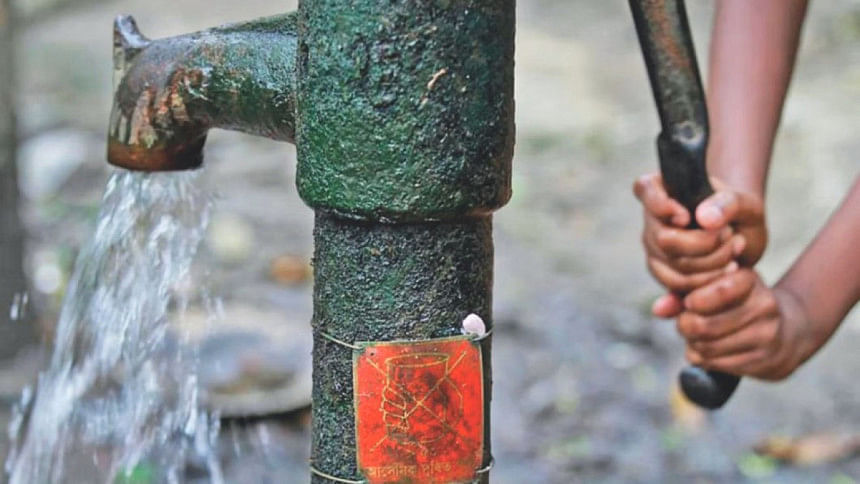App to help detect arsenic in tubewells

In a country where millions depend on tubewells for their daily drinking water, a silent killer continues to flow through the pipes -- arsenic.
But now there is hope, as a simple web-based app called iArsenic is empowering users to instantly assess whether their water is safe or potentially toxic.
Short for "instant arsenic", the tool provides rapid screening based on observable well features without requiring lab testing.
The initiative supported by the Department of Public Health Engineering (DPHE), iArsenic.com, is accessible via smartphones and computers, allowing anyone to check arsenic contamination risks of local tubewells by inputting basic details such as location, depth, and signs of staining on the well platform.
Backed by a scientific model trained on millions of historical arsenic test results, the app delivers instant assessments, flagging wells as safe or unsafe based on observed indicators, not lab analysis.
The official launching ceremony for the iArsenic app is scheduled to be held at the DPHE auditorium from 3:00pm to 4:00pm today.
Arsenic poisoning from contaminated groundwater has remained one of Bangladesh's most persistent public health crises.
While tubewells were originally installed to prevent cholera and other waterborne diseases, many now draw water from arsenic-rich aquifers, causing slow but severe damage to health.
The World Health Organization (WHO) estimates that long-term exposure to arsenic concentrations above 10 micrograms per litre can lead to skin lesions, cancers, developmental effects in children, and cardiovascular diseases. Yet around 20 million, often unknowingly, continue to drink water from contaminated wells.
What makes the iArsenic app so powerful is its combination of science and simplicity. The interface is available in both English and Bangla, ensuring that rural communities, those most at risk, can use it without technical barriers.
A simple green-red indicator shows the arsenic status of each well. Green means likely safe. Red means potentially unsafe.
Accessible from anywhere with an internet connection, iArsenic bridges the gap between government screening and household-level awareness. Anyone who knows a tubewell's depth, location, and staining colour can use the app to assess its risk.
"iArsenic is not a replacement for chemical testing but a public tool for early screening," said Dr Mo Hoque, lead researcher from the University of Portsmouth. "No single option will solve arsenic exposure for the 20 million people still at risk. We need coordinated action from schools, mosques, health workers, and tools like this app working together to raise awareness and support safer choices."
Developed by an international team including scientists from the University of Portsmouth, Curtin University (Australia), University of Dhaka, Imperial College London, and others, the app has been validated against field data and shows 84 percent accuracy in identifying high-risk wells.
The platform is especially valuable in areas where health services are limited. By identifying risky wells, families can take timely action such as switching to a safe well nearby, installing a safe well, or contacting authorities for further information.
The research team has also developed a three-tier classification system to guide action, identifying nearly 18,000 Tier 1 villages and urban wards where arsenic risk is high and safe water options are limited.
"These are priority hotspots," said Dr Ashraf Dewan of Curtin University. "We urgently need coordinated investment in these Tier 1 areas, combining digital tools like iArsenic with targeted government interventions, social mobilisation, and stronger community awareness. That's how we turn data into protection."

 For all latest news, follow The Daily Star's Google News channel.
For all latest news, follow The Daily Star's Google News channel. 



Comments